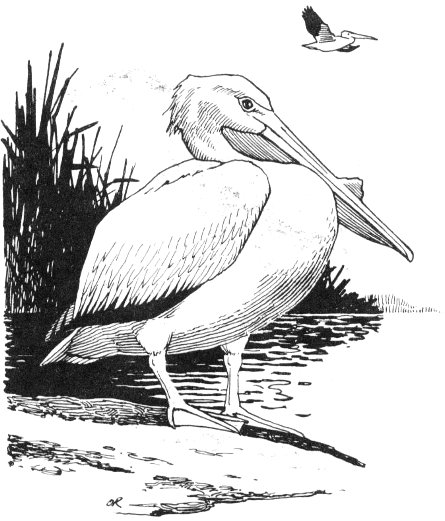
INTRODUCTION TO OUR BIRD FRIENDS
VOLUME 2
Text by L. B. Carson
Illustrations by Orville O. Rice
Copyright, 1957
BY CAPPER PUBLICATIONS, INC.
Printed in the United States of America
FOREWORD
More and more people are turning to the outdoors and the enjoymentof nature. Many great Americans have been students of wildbirds. This is not accidental, for few forms of outdoor recreationoffer so much pleasure.
The season of the year will in some cases determine what birdsare in your area. Color is important in identifying species. Look carefullyat the silhouette or shape; is it slender or chunky, is the tailshort or long? Compare its size with a bird with which you are morefamiliar. Habitat is important, too. One learns to look for Red-wingedBlackbirds in wet marshes; for a meadowlark in pastures and fields.Behavior is a clue. Does it walk or hop; does it soar, does it walkheadfirst down a tree, as is the habit of the nuthatch, or scratchamong leaves like the towhee? Listen to the bird’s song and callnote. With a little experience, distinctive songs may be identified.Each bird has its characteristic song.
Bird study can be pursued with as much effort as the watchercares to exert. Birds need food, water and protection from theirnatural enemies. You can provide these in your own yard. Somebirds will be attracted and you can study them at your leisure. Otherspecies, those which live in swamps, for example, must be searchedfor aggressively.
A bird guide is a splendid investment, considering the hours ofpleasure it will bring you. Binoculars are a help, too, in studying thesize, shape, beak, legs and color pattern.
Make written notes of what you see and hear, or a dated list ofspecies and numbers of each. Records will add to your own pleasureand add to the sum of knowledge on birds in general.
This is the second booklet on common birds of the United Statespublished by Capper Publications, Inc. Each of the two volumes illustratesand describes 50 different species. Additional copies (specifywhether volume I or II is desired) may be ordered for 25 cents eachas follows:
- Bird Book Department 2
- Capper Publications, Inc.
- 8th and Jackson Streets
- Topeka, Kansas
White Pelican
Pelecanus erythrorhynchos

Soaring overhead during migration, a flock ofWhite Pelicans is a magnificent sight. Thesegreat birds weigh as much as 15 pounds, have awingspread of 9 feet and a total length of morethan 5 feet. Their legs are sturdy but short, thetoes fully webbed. The bill is long and flat witha pouch beneath the lower mandible. Three contrastingcolors make this bird easily identified.The bird is white except for the outer two-thirdsof the wings where the end and rear halfis black. The bill, pouch and feet are yellow orreddish-yellow.
The head is carried well back, which rests thebill and pouch on the shoulders. They float highon the water and when surrounded by ducks andgrebes, they look like aircraft car